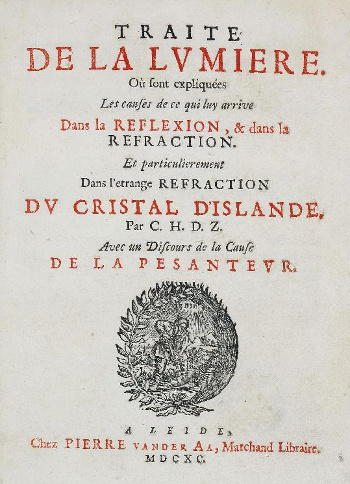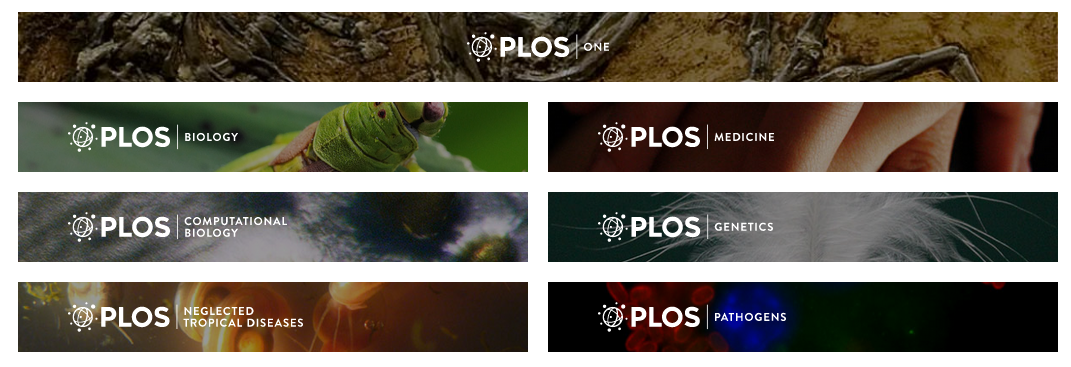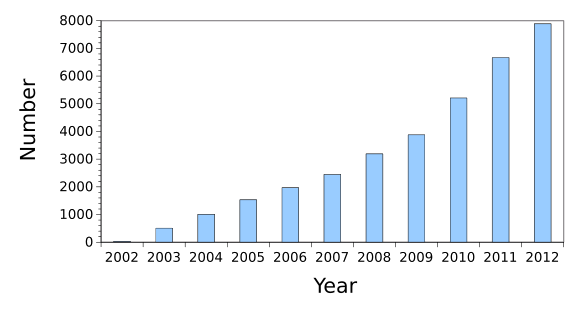Scientific Publishing
August 13, 2018
Having done
scientific research in a
career spanning several
decades, I've
published quite a few
scientific papers. These were most often written with
collaborating colleagues, and they were published in
traditional print journals. Reading
my publication list gives me the opportunity to remember my colleagues of years past as I read their names, but it also reminds me that not much of this research turned out to be useful. I wrote about this idea in a previous article,
Everything Becomes Trivial (March 25, 2011 ).
The publication system that I entered as a young
scientist had a simple
process. You would collect your research and
analysis into a somewhat cogent
draft with suitable
citations to previous work, and you would mail multiple copies of it to the journal
editor. There were many scientific journals published by
professional societies, and quite a few others that were not. The editor would send your paper for review to scientists with knowledge in the particular research area. These reviewers were typically selected from
authors who had published in that same journal. Interestingly, some journals would have you suggest potential reviewers.
The purpose of the review was to assure that the
quality of your paper met the journal's standards. It also gave the reviewers the opportunity to suggest some minor improvements to the paper before publication. In some rare cases, the paper would be rejected if a reviewer found some glaring
error. In a few cases, the reviewers would disagree on whether the paper should be published, in which case the editor would send it to another reviewer or look at the paper himself. This review process was like a
nihil obstat from your
peers, and it ensured that only things sufficiently scientific made it into print.

Old school scientific publication - The title page of the 1690 Traité de la lumière (Treatise on Light) by Christiaan Huygens (1629-1695).
Scientific research was typically published in book form. There was no formal peer review, but the expense of publication helped to ensure that only well reasoned studies made it into print.
Huygens, known for his work in optics and mechanics, ranks with Isaac Newton as one of the great physicists of the scientific revolution.
Huygens discovered Saturn's moon, Titan, and he was the inventor of the pendulum clock in 1656, although Galileo (1564-1642) was the first to note the isochronous property of the pendulum.
(Via Wikimedia Commons).
I've been a reviewer for quite a few papers, most of which were of high enough quality that I would have been pleased to have been an author. I rejected one, since I believed that the
sample size was too small to justify the conclusions, and I rejected another that read more like an
advertisement for a
technology startup than an actual scientific work. In a few, I corrected some
grammatical errors in high quality work by non-
English-speaking authors.
After acceptance of a paper, it took a long time for its publication. That's because it needed to be
typeset so that a
galley proof could be
proofread by the authors. Proofreading was my least favorite part of the process. Eventually, many months after the paper's submission, physical copies of the journal containing the article would be mailed to
subscribers, and the authors would receive a hundred
offprints of their article to share with colleagues. These were free, but the authors' institution actually paid quite a bit of money to have their article published. It seemed somewhat strange that both the subscribers
and the authors were paying for their paper. This brings to mind the recent
net neutrality controversy.
As technology progressed, and desktop publishing programs became ubiquitous, journals started to require that authors submit "
camera-ready" articles in the journal's format to be
offset printed using a
photographic process. Soon, authors started to wonder why they were doing all the work; namely, the science, plus the mechanics of publication. Research institutions wondered why they were paying
highly-compensated scientists to do document composition, paying journals for article publication, and also paying for journal subscriptions for their
libraries.
As the
history of
Eastman Kodak will attest, advances in technology have a way of
disrupting established
industries. That's what the
Internet did to scientific publishing. Publishing a paper on the Internet is essentially free, although there are some
administrative costs associated with peer review and
archival data storage. These costs, however, are far less than those needed under the traditional publishing process, since reviews can be handled by online forms, and correspondence is accomplished via
email. Internet publication allows individuals and libraries access to an
electronic resource that can be transferred to them at no publication cost. It's read-on-demand, rather than print,
index, and
warehouse.
In 1984,
Stewart Brand (b. 1938) coined the expression, "
information wants to be free," and it's only fitting that scientific knowledge should be freely shared with all
humanity. For more than two decades, I've delighted in using
arXiv, a repository of prepublication manuscripts submitted by their authors for a more general peer review. This type of peer review actually works. On one occasion, I communicated to the authors my discovery of a significant fault in the data analysis in their arXiv paper. I wrote about arXiv in a
previous article (ArXiv at Twenty, August 24, 2011).
Many of today's scientific papers are now
open access; that is, no fee is required to read them.
PLOS, the Public Library of Science, was a pioneer in open access, first launching
PLOS Biology in October 2003, and then several others, including the multidisciplinary journal,
PLOS ONE. Even the major scientific publishers,
Elsevier and
Nature, have begun publishing open access journals to complement their traditional journals. In some cases, open access articles are published alongside traditional articles with the authors or their research sponsors paying for the free access.

Mastheads of seven PLOS journals. These are PLOS ONE, PLOS Biology, PLOS Medicine, PLOS Computational Biology, PLOS Genetics, PLOS Neglected Tropical Diseases, and PLOS Pathogens. Seeing the very specialized title, PLOS Neglected Tropical Diseases, almost inspires me to start a new journal, "Neglected Alloys of Iron and Nickel." (Via PLOS).
Open access journals, for which the publisher of the journal makes all articles freely available on a
website, are provided in a number of ways,
• A professional society, an academic institution, or a government agency handles publication at no cost to the authors.
• Article processing and publication charges are paid by the authors or their research sponsors.
• A publisher provides open access to its journal after an embargo period of a few months, or longer.
Open access journals were initially regarded as less
prestigious than traditional journals, but this
stigma no longer exists. A turning-point might have been when the most prestigious traditional publishers started to integrate open access articles into their journals and launch open access titles. The
statistics for the first decade of open access publication is shown in the following
chart of open access journal numbers over ten years.

Opening trend in first decade - The number of open source journals by year, 2002-2012. (Click for larger image. Graphed using Gnumeric from data in ref. 1).[1]
The
Directory of Open Access Journals (DOAJ) presently lists 11,780 Journals published in 128
countries, containing more than three million articles,[2] and it's estimated that about a quarter of research papers are now open access.[3] Not surprisingly,
science funding agencies are eager to lower the costs they pay for publication of the research that they sponsor. Having lower cost while simultaneously having a wider distribution of the fruits of such sponsored research is an additional benefit. Money presently spent on publication costs could be redirected by these agencies to a greater number of research grants and for
science education.[3]
The amount of money involved is indeed staggering. Publication cost for a single article in a traditional journal is about $5,000.[3] Contrast this with the estimated true cost of publishing an article that can be as low as $100.[3] Such a disruption of a highly
profitable business model has caused
Springer Nature to withdraw a
stock offering.
Couperin, a
consortium of more than 250 academic institutions in
France, has cancelled its subscriptions to Springer Nature journals, while
Swedish and
German universities did the same for their Elsevier subscriptions.[3]
The
European Commission is soliciting proposals for development of an open-access scholarly publishing platform for the
European Union.[3] The European Commission plans to establish open access publication of all scientific papers by 2020.[3] Just as important is the idea of enhanced publication that incorporates
videos,
visualizations, and
databases, as well as text, perhaps even
virtual reality environments.[3-4] Writes
James Somers in a recent article in
The Atlantic,
"The possibility is real for creating something so superior to the present system that people will wonder how publishers ever got away with it for so long... All of the technology and traits to build a hybridized scholarly commons infrastructure already exists. It is up to academic communities themselves to step away from their apathy and towards a fairer and more democratic system for sharing our knowledge and work. That is, after all, what research is all about."[3]
References:
- Elisabetta Poltronieri, Elena Bravo, Moreno Curti, Maurizio Ferri and Cristina Mancini, " Open access publishing trend analysis: statistics beyond the perception," Information Research, vol. 21, no. 2 (2016), paper no. 712.
Directory of Open Access Journals (DOAJ).
- Jon Tennant, "Scholarly publishing is broken. Here's how to fix it," Aeon, July 3, 2018.
- James Somers, "The Scientific Paper Is Obsolete - Here's what's next," The Atlantic, April 5, 2018 .
Linked Keywords: Science; scientific; research; career; decade; scientific literature; publish; scientific paper; collaboration; colleague; traditional print journal; scientist; process; analysis; draft document; citation; editing; editor; professional association; professional society; author; quality; error; nihil obstat; peer group; peer; old school; title page; Traité de la lumière (Treatise on Light); Christiaan Huygens (1629-1695); research; book; peer review; expense; optics; mechanics; Isaac Newton; physicist; scientific revolution; Saturn; natural satellite; moon; Titan; invention; inventor; pendulum clock; Galileo Galilei (1564-1642); period of oscillation; isochronous; pendulum; Wikimedia Commons; sample size; advertising; advertisement; technology; startup company; grammar; grammatical; English-speaking; typesetting; typeset; galley proof; proofreading; proofread; subscription business model; subscriber; offprint; net neutrality; camera-ready; offset printing; offset printed; photograph; photographic; compensation and benefits; highly-compensated; library; libraries; history; Eastman Kodak; disruptive innovation; industry; industries; Internet; business administration; administrative; archive file; archival; data storage; email; web resource; electronic resource; bibliographic index; warehouse; Stewart Brand (b. 1938); information wants to be free; humanity; arXiv; open access; PLOS, the Public Library of Science; PLOS Biology; PLOS ONE; Elsevier; Nature Publishing Group; PLOS Medicine; PLOS Computational Biology; PLOS Genetics; PLOS Neglected Tropical Diseases; PLOS Pathogens; website; government agency; funding of science; research sponsor; embargo (academic publishing); embargo period; reputation; prestige; stigma; statistics; chart; academic journal; Gnumeric; Directory of Open Access Journals (DOAJ); country; countries; science funding agency; science education; profit; profitable; business model; Springer Nature; public offering; stock offering; Couperin; consortium; France; Sweden; Swedish; Germany; German; European Commission; European Union; video; visualization; database; virtual reality environment; James Somers; The Atlantic; apathy; democracy; democratic.